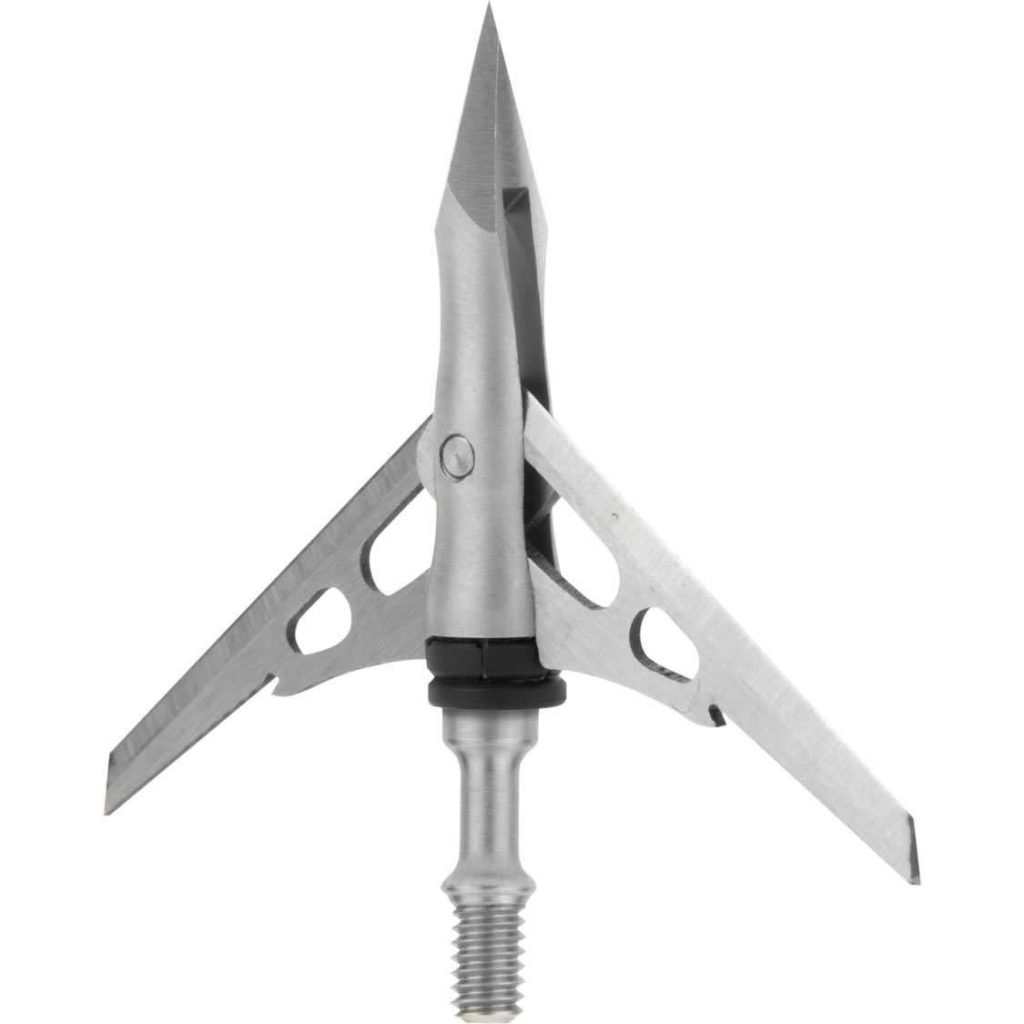What Broadhead is right for me?
If you were to walk into a Bass Pro, Cabelas, or Jim Bows Archery your eyes would be met with a wall of different broadhead options. How are you supposed to pick one? Add on that there are a ton of options that are online order only and the possibilities can seem endless.
So, how exactly does one choose a broadhead? What makes each broadhead different? How is a new hunter supposed to know which one to choose?
It’s my hope that after reading this, you will have a better idea of what broadhead will work best for you!
I’m going to go over two categories of broadheads, their positives and negatives and then give you my thoughts for what a new hunter should go with.
Firstly, let’s talk about mechanical heads as they are the most widely marketed on hunting media. These heads use a fixed ferrule with the blades collapsed and held in place with bands, collars, or tabs until the broadhead hits an animal or target. After which, the blades deploy to create a large cutting surface. These heads tend to fly quite well (even out of a poorly tuned bow), as the surface area of the head itself resembles that of a field point during
I have used these heads, specifically the Rage broadhead, and it is very effective, creates excellent blood trails, and the animals expire quickly.
However, they take quite a bit of force to deploy properly, meaning that these are not the best option for short draw or light poundage shooters. Another downside to these heads is that the blades are quite thin and can bend or break when they hit bone. A shoulder hit with a mechanical may lead to an inconsistent deployment and potentially low amounts of penetration. Below is a photo of a
Replacing the blades and collars is fairly easy but it is an added cost.

Rage Hypodermic 
Bent blade after rib hit 
Start of a blood trail 
View from the top of the coulee
The second category I’ll talk about is the fixed blade heads. Within this category there are a wide array of styles- you have replaceable blades, permanent blades, 3 blade, 4 blade, and 2 blade options.
I currently shoot a 4 blade Slick Trick fixed blade head with a cutting diameter of 1-1/8”. It uses replaceable blades. So again, there is an inherent yearly cost of replacing the blades prior to hunting season. I am currently looking into fixed blade heads that are able to be resharpened so I can touch them up in the field if need be and if the blades are not removable the head should be more durable.

The price of fixed blade heads also varies greatly, a 3 pack of Slick Tricks will run about $50 CDN whereas the new Iron Will Solid 2 blade heads are $99 USD + shipping for a 3-pack.
The plus side of these broadheads are the benefits of a reliable cut with no moving parts, especially if you hunt in brushy areas because fixed blade heads are less affected by small brush. Hitting small amounts of brush with a mechanical could cause premature blade deployment which can either cause a large deflection in flight or a lack of penetration as a 2-3” blade will be affected by the hide more than a smaller fixed head.
With fixed blade heads, you do need to be more conscious with your bow tune, ensuring that timing is correct, arrow spine is correct, and that your rest is properly adjusted as the fixed blade heads magnify any tuning issues, this is due to the blades acting like metal vanes on the front of your arrow.
My recommendation for a new hunter would be to spend some time learning how to tune your bow (or get your bow tuned by a Pro Shop) and go with a fixed blade head. A fixed blade head will give you the best chance at getting the required penetration if your first shot is at a difficult angle or is too far forward. An extreme quartering angle shot with a mechanical could cause a deflection, so your arrow never reaches the vitals and most mechanicals lack the robustness to penetrate heavy bone. I also feel that learning as much about your equipment and how to get the best possible results is super important and increases your chances of making clean, ethical and quick harvests. With that being said, I do carry a couple of mechanicals in my quiver for follow-up shots. These shots may be longer, so the field tip like flight can help with a distance shot to finish an animal quickly. Couple that with the large diameter cut and wound channel they make and it can expedite the recovery of an animal, which is very important.
Thanks for tuning in to this quick post about broadheads. While
As always, I would love to engage with you guys and help if you have any questions!
-R







